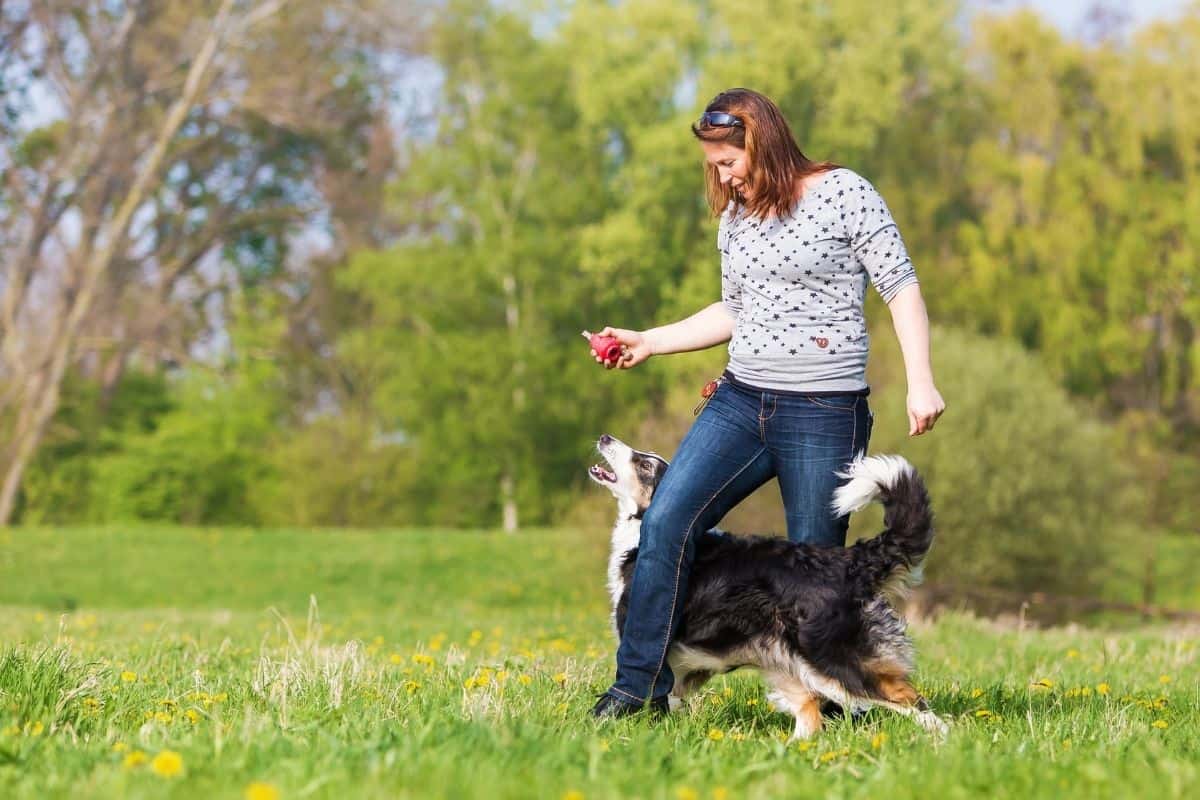Canine Freestyle: A Dog Sport Guide

Canine freestyle, an artful blend of dance and obedience, has taken the dog world by storm. Join us in exploring this captivating world of canine freestyle, where dogs become dance partners.
Have you ever wondered what it would be like to dance with your dog? To choreograph mesmerizing routines set to music that tell a unique story, where every twist and twirl is in perfect harmony with your four-legged companion? Enter the enchanting realm of canine freestyle, a dog sport that combines creative expression with obedience in a way that can only be described as pure magic.
What is Canine Freestyle?
Canine freestyle is more than just a dog sport; it's a spectacular fusion of art and performance. In this captivating discipline, dogs and their handlers perform choreographed routines set to music, blending together elements of obedience and dance. The result is an impressive display of teamwork, creativity, and communication between dog and owner.
Dogs and their human partners perform a wide range of movements, from graceful spins and intricate patterns to joyful leaps and synchronized footwork. The core of canine freestyle is the strong bond between the handler and their dog, as they move together in perfect harmony, telling a story through their dance.
Benefits of Canine Freestyle
Participating in canine freestyle offers a multitude of benefits for both dogs and their handlers. For dogs, it provides essential physical and mental stimulation. The intricate routines challenge their coordination, balance, and focus, promoting mental sharpness and physical fitness.
For handlers, canine freestyle is an art form that encourages creativity and self-expression. It's an opportunity to choreograph unique routines, select music, and design costumes, making it an excellent outlet for artistic expression. Moreover, the sport strengthens the emotional bond between dogs and their owners, fostering trust and communication.
Equipment Needed
Getting started in canine freestyle doesn't require extensive or expensive equipment. Here's a list of essential items you'll need:
- Music Player: To accompany your routine with the perfect soundtrack, invest in a reliable music player or smartphone with speakers.
- Leash: A standard leash is used during practice and early training stages to maintain control over your dog.
- Performance Area: You'll need a safe and spacious area for practice, with ample room for both you and your dog to move comfortably.
As you progress in freestyle, you may choose to invest in other optional equipment, such as props and costumes, to enhance the theatrical aspect of your performances.
How to Get Involved in Canine Freestyle
Follow these steps to get started in canine freestyle:
- Basic Obedience Training: Ensure your dog has a solid foundation in obedience. Skills like "sit," "stay," "heel," and "come" are essential.
- Find a Local Instructor or Class: Look for reputable local instructors or classes specializing in canine freestyle. These resources provide invaluable guidance for beginners.
- Home Practice: Regular practice at home is crucial. It helps reinforce what you've learned during classes and improves your dog's skills.
- Choreograph Your Routine: With the help of your instructor, select music, design your routine, and start rehearsing.
- Participate in Competitions: Once you've honed your skills, consider entering competitions to showcase your talent and bond with your dog.
Key Organizations Hosting Competitions
In the world of canine freestyle, there are several key organizations that host competitions and regulate the sport. Two notable organizations are:
- Canine Freestyle Federation (CFF): CFF is a leading organization in the United States for canine freestyle, hosting national championships and events.
- The World Canine Freestyle Organization: WCFO is a global hub for canine freestyle enthusiasts, providing information, resources, and events for this creative and captivating dog sport.
Participating in competitions organized by these reputable organizations can elevate your skills and expose you to a broader community of like-minded individuals who share your passion for canine freestyle.
Frequently Asked Questions
Canine freestyle is a highly adaptable sport, and virtually any breed or mix can participate. However, dogs with a natural aptitude for obedience and enthusiasm for learning tend to excel. Breeds like Border Collies, Australian Shepherds, and Poodles are often seen in freestyle, but that doesn't mean your dog can't join in the fun, regardless of their breed.
Routines can range from simple to highly complex, depending on your experience and your dog's abilities. As a beginner, start with basic movements and gradually progress to more complex choreography. Enroll in a canine freestyle class to learn the fundamentals and receive guidance on creating your first routine.
Canine freestyle is suitable for dogs of all ages, from puppies to senior dogs. It's essential to adapt routines to your dog's physical condition and abilities, especially for older dogs. Puppies can start learning basic obedience and simple movements, while older dogs can enjoy less physically demanding routines.
Selecting music and choreographing routines is a creative process. Choose music that resonates with you and your dog, as it sets the tone for your performance. Work with an instructor to create choreography that complements the music and showcases your dog's abilities.
No dance experience is necessary to excel in canine freestyle. While some handlers with dance backgrounds may incorporate dance elements, freestyle routines are tailored to your and your dog's abilities. The focus is on your partnership and communication, not on your dance skills.
The cost of canine freestyle can vary. Training costs depend on factors like location and the level of expertise of the instructor. Basic equipment, including a music player and leash, is relatively affordable. More elaborate props and costumes, if desired, can increase costs.
Most canine freestyle competitions do not have age restrictions for dogs or handlers. As long as your dog is physically capable of performing and you can meet the basic physical demands, you're welcome to participate, regardless of age.
Canine freestyle is a remarkable sport that transcends the boundaries of traditional dog training. It's a captivating world where your dog transforms into your dance partner, and together, you create magic. The benefits are bountiful, from the physical and mental stimulation it offers your dog to the artistic outlet and strengthened bond it provides you.
The dog training school at The Academy of Pet Careers offers the knowledge and guidance you need to begin your journey into the enchanting world of canine freestyle. Learn about how to become a dog sport trainer. As you embark on this adventure, you'll find that the sport not only ignites your passion but also deepens your connection with your beloved canine companion.
 Author - Joseph Schifano
Author - Joseph Schifano
Joseph Schifano is the owner and President of The Academy of Pet Careers. With over 20 years of experience working in the pet field, managing large scale pet care businesses, he has experience in every facet of the industry. Joseph's focus is primarily on the business of pet care but his passion is in understanding animal behavior how a dog's brain works so we can improve the care we provide as pet professionals. He is a huge advocate for Pet Empowerment and Force Free training methods. Read more in Joseph's full bio.
